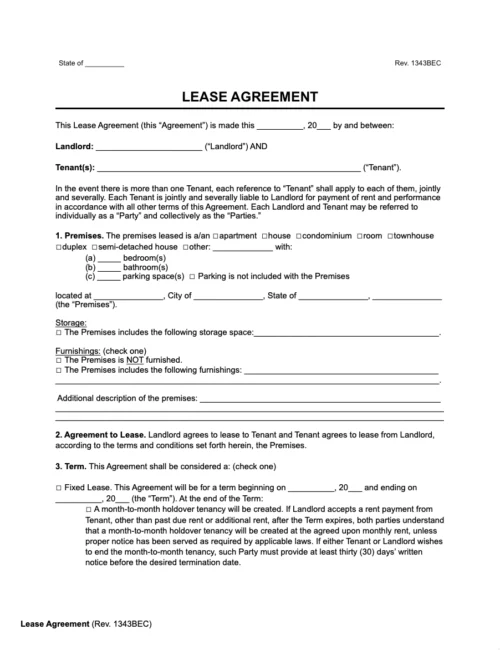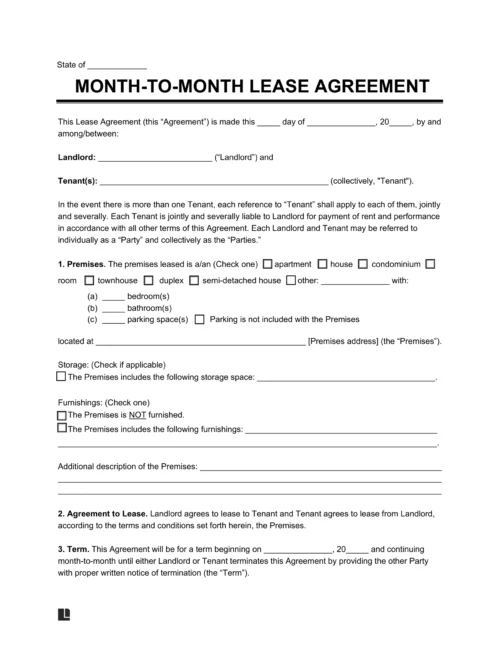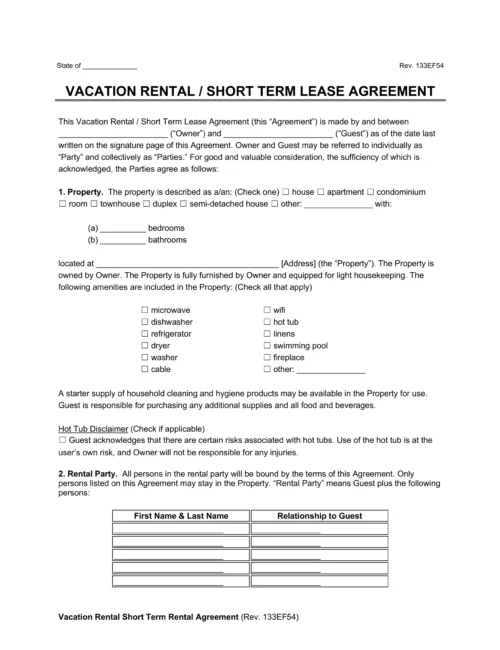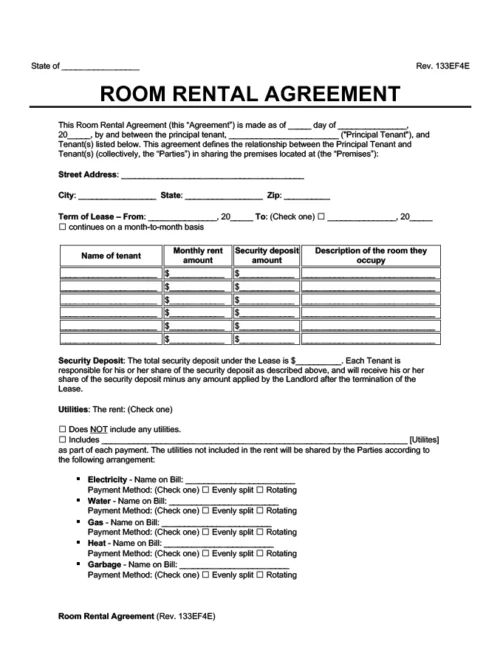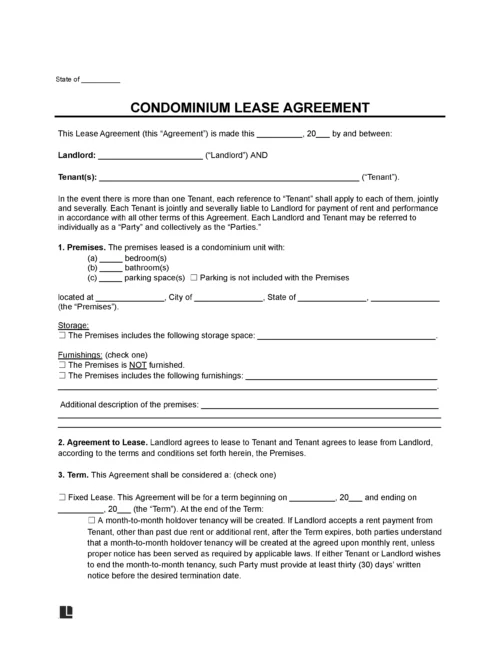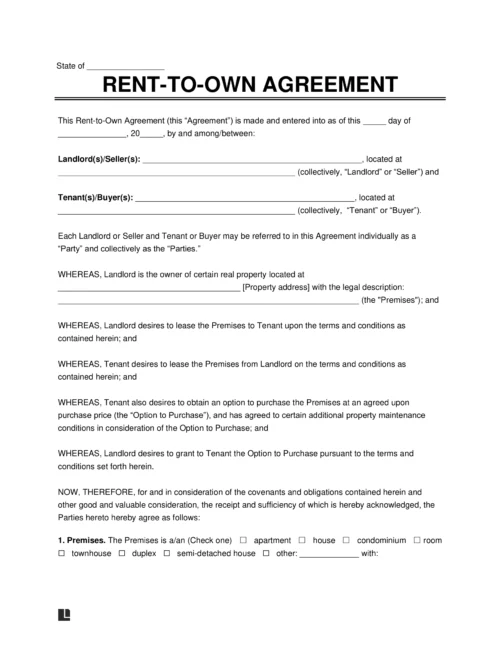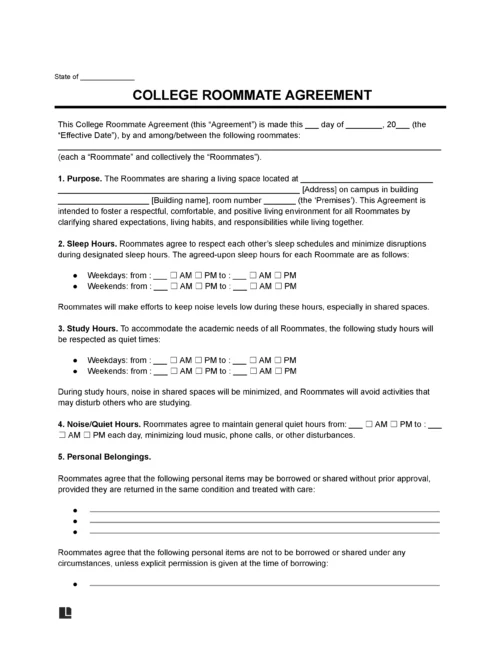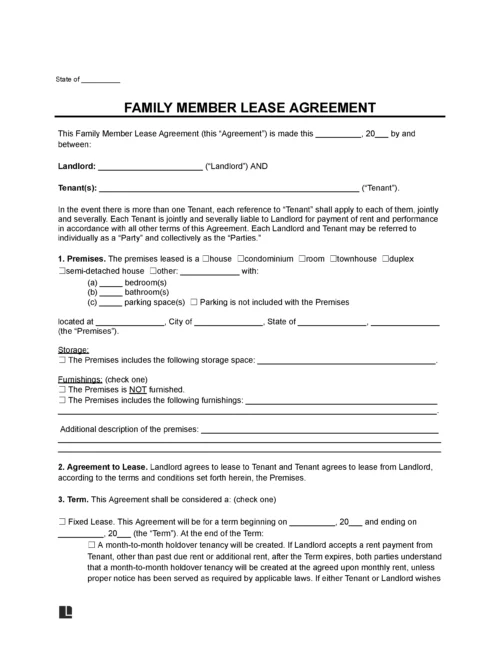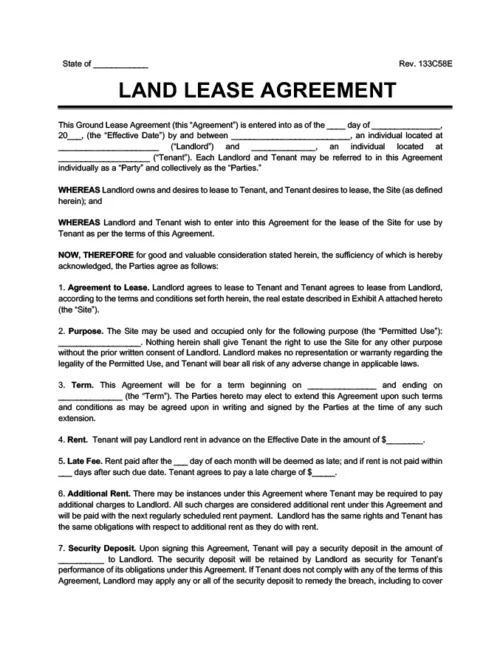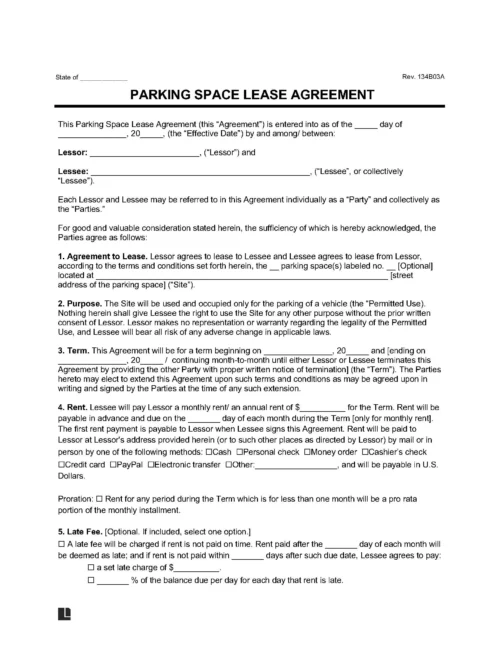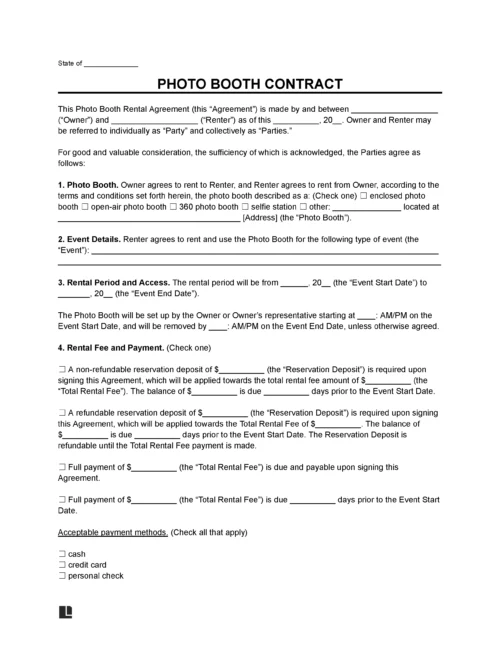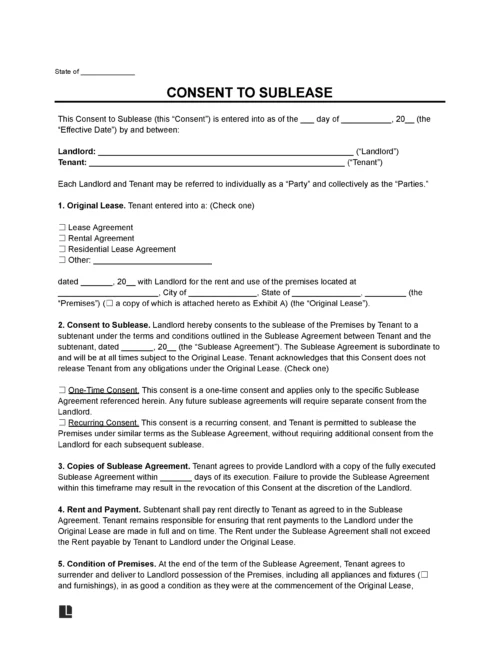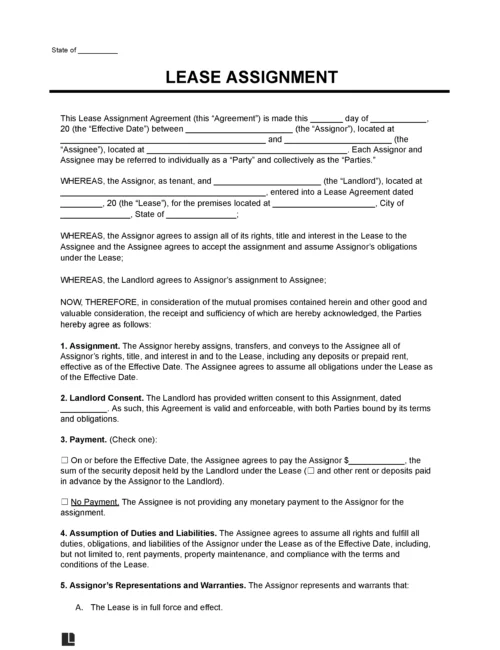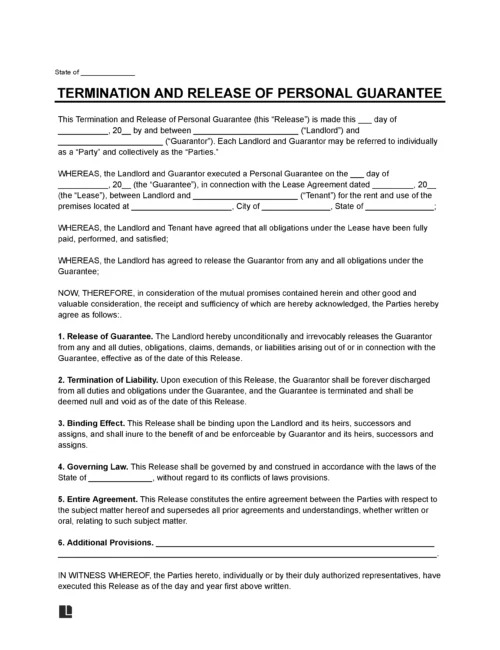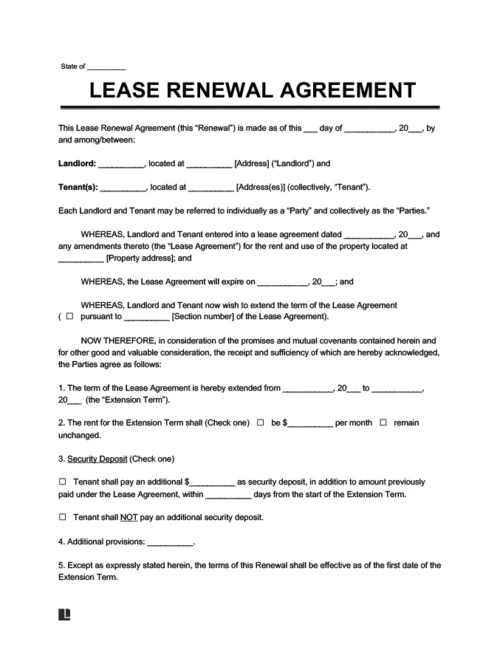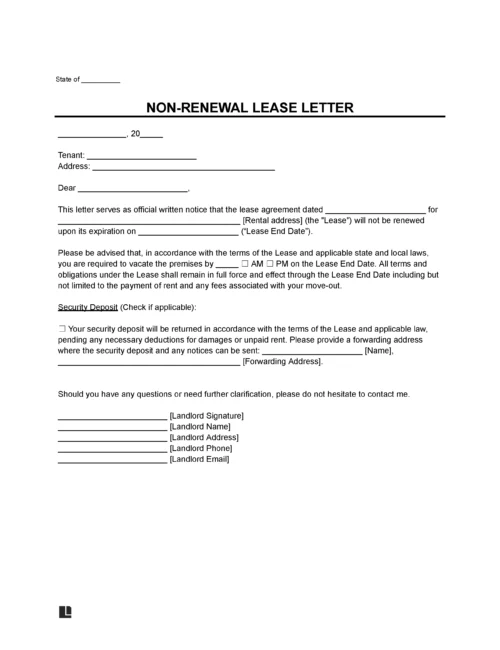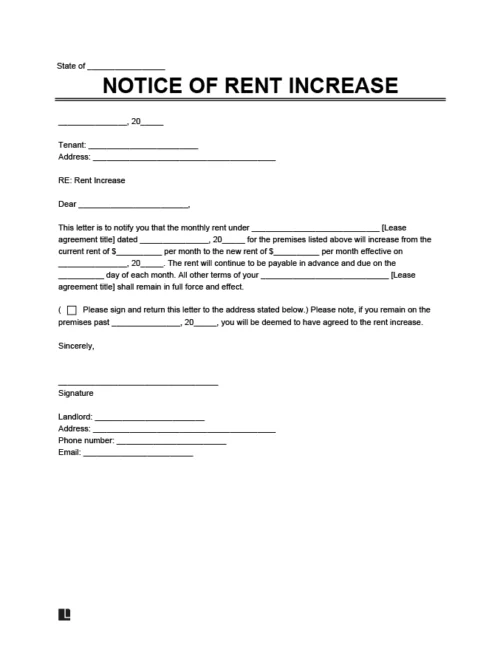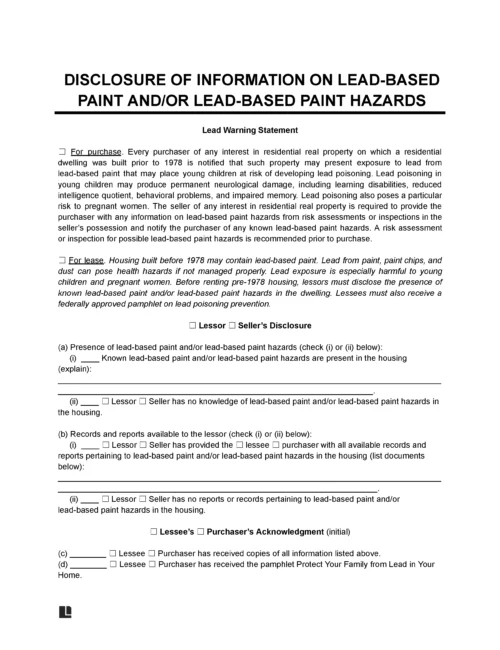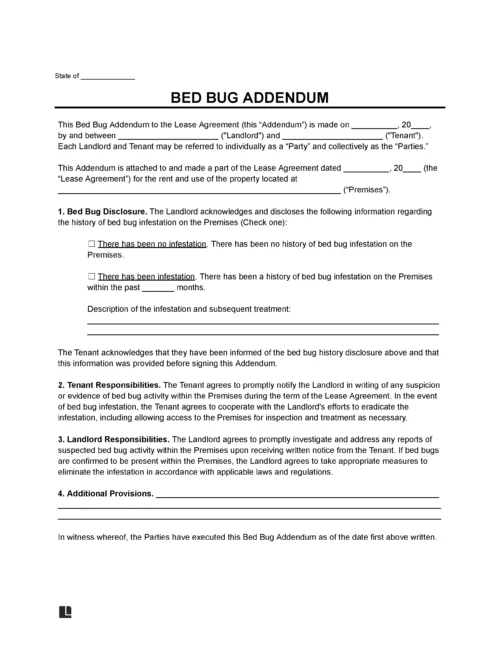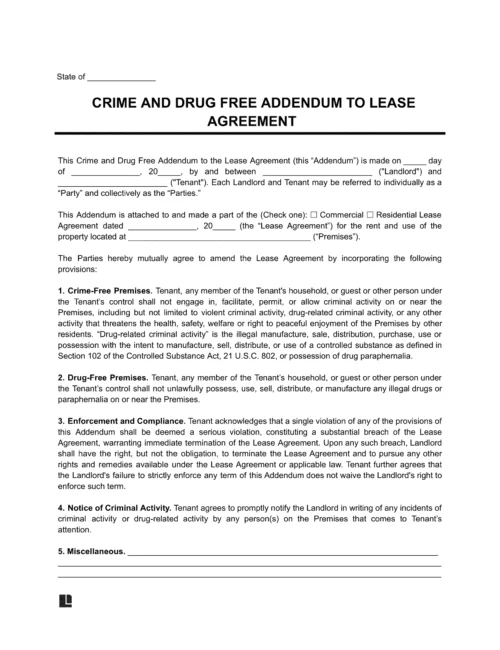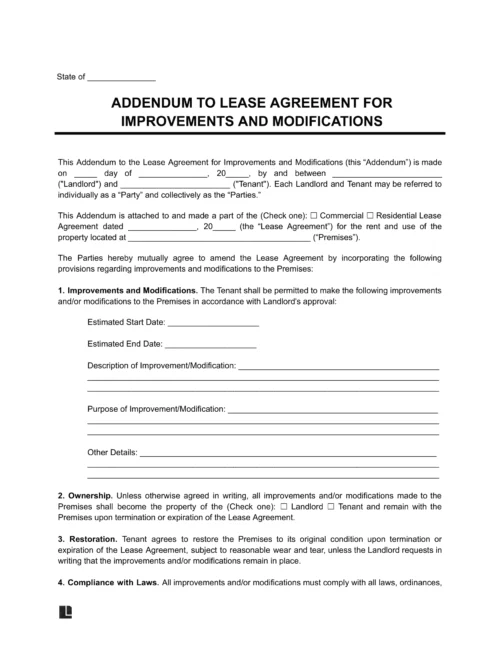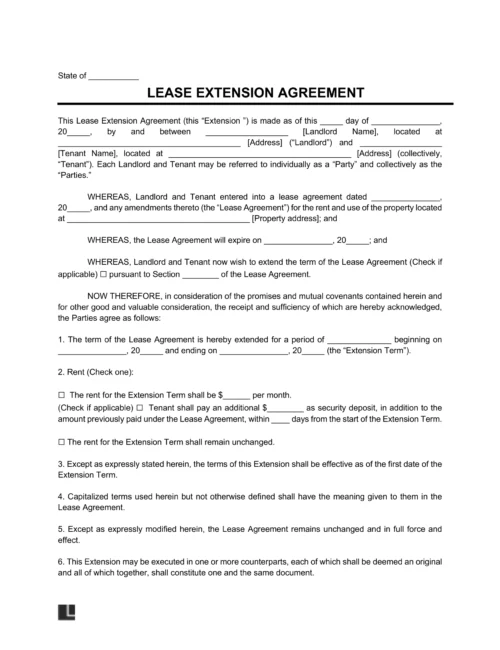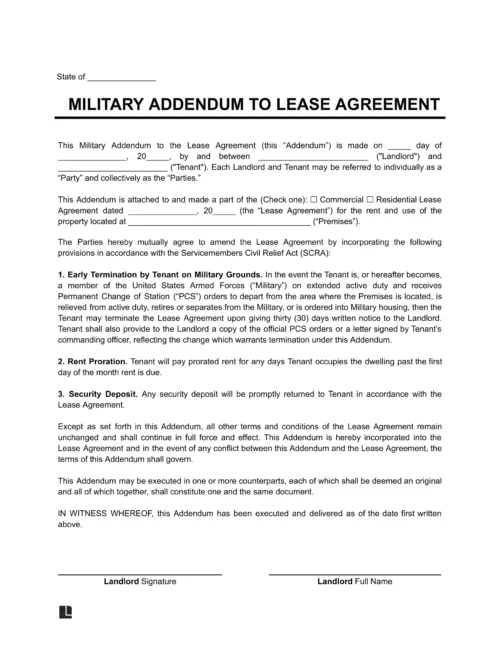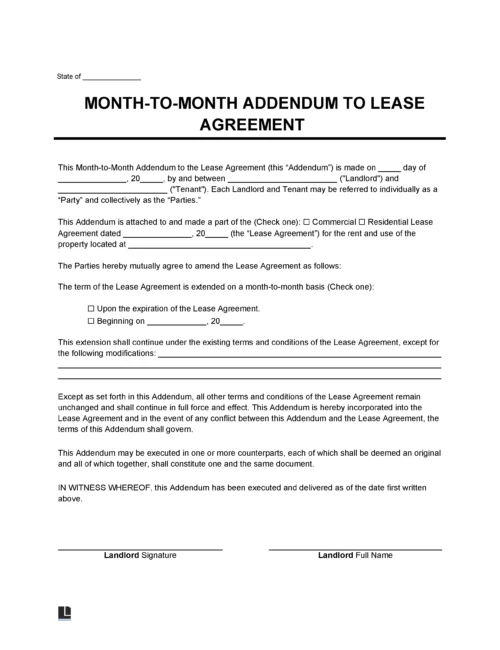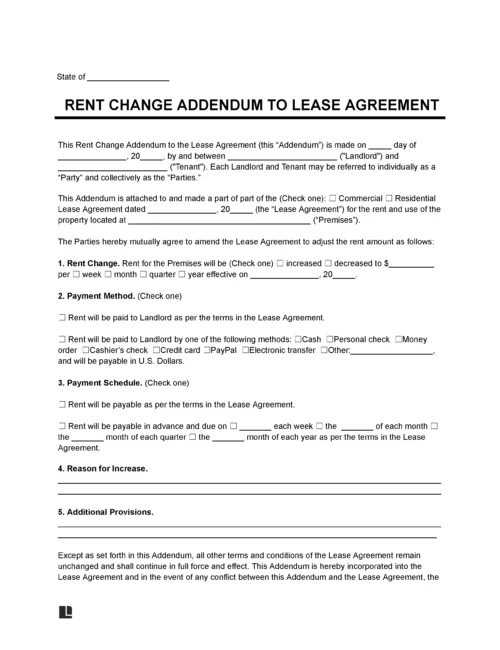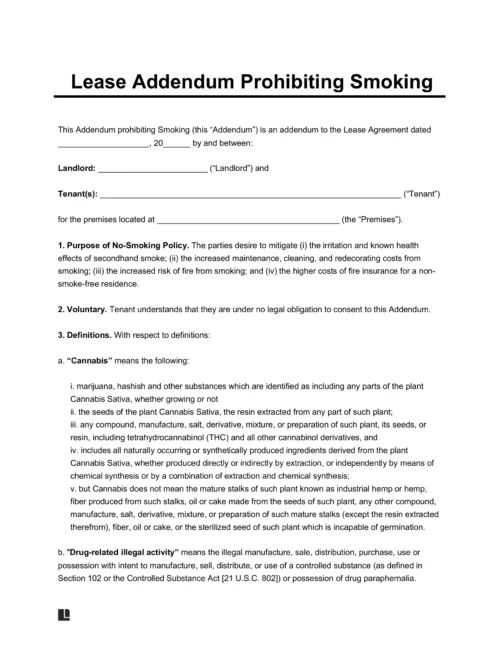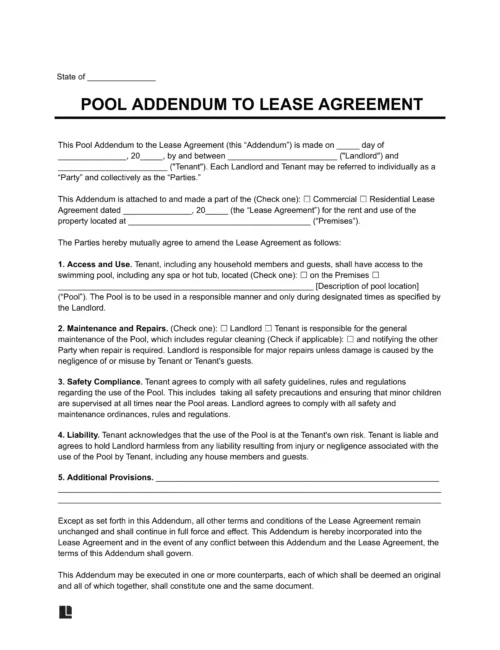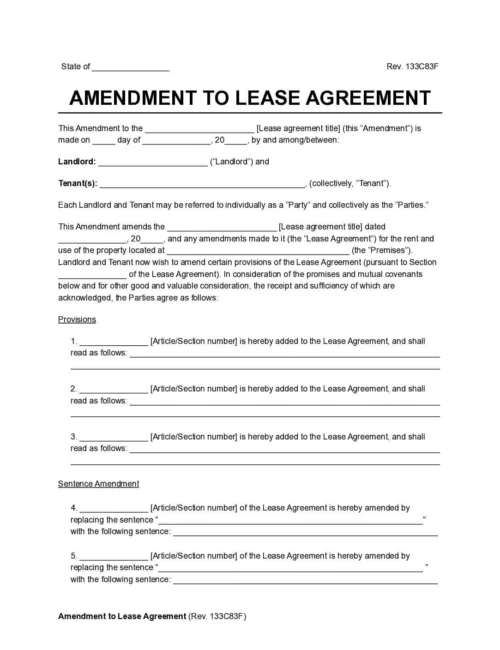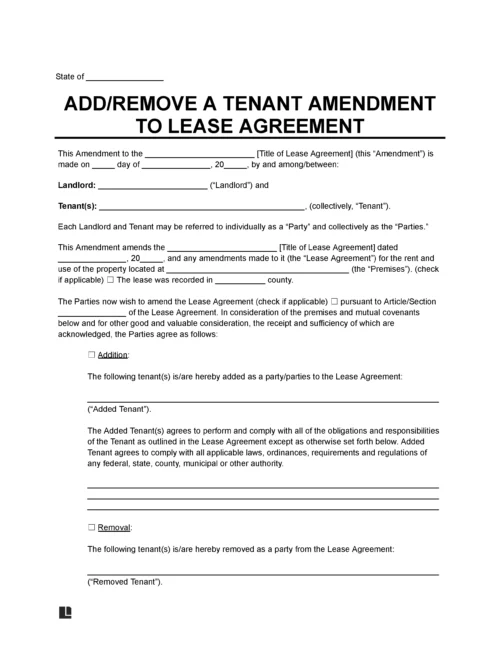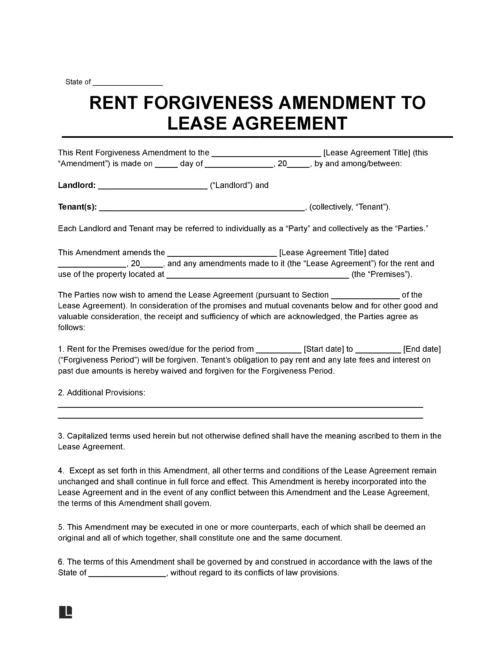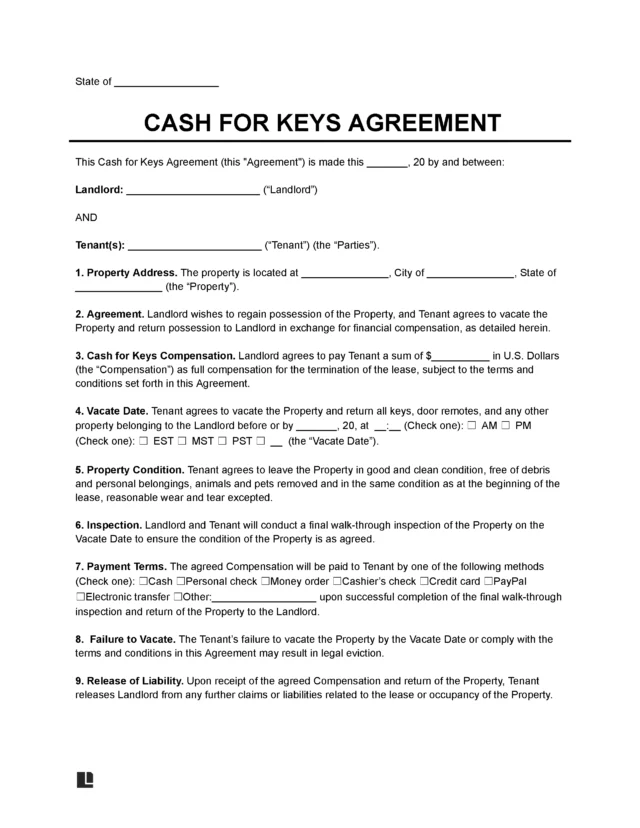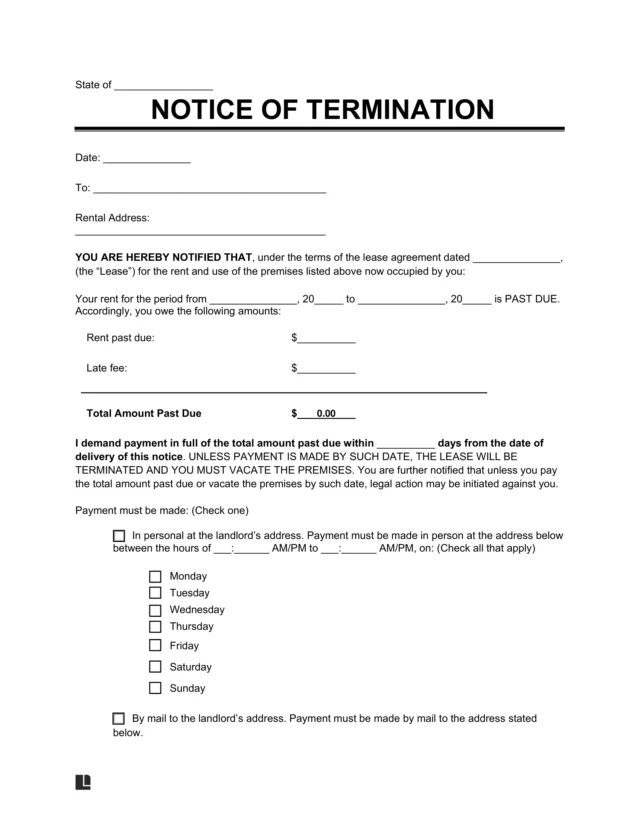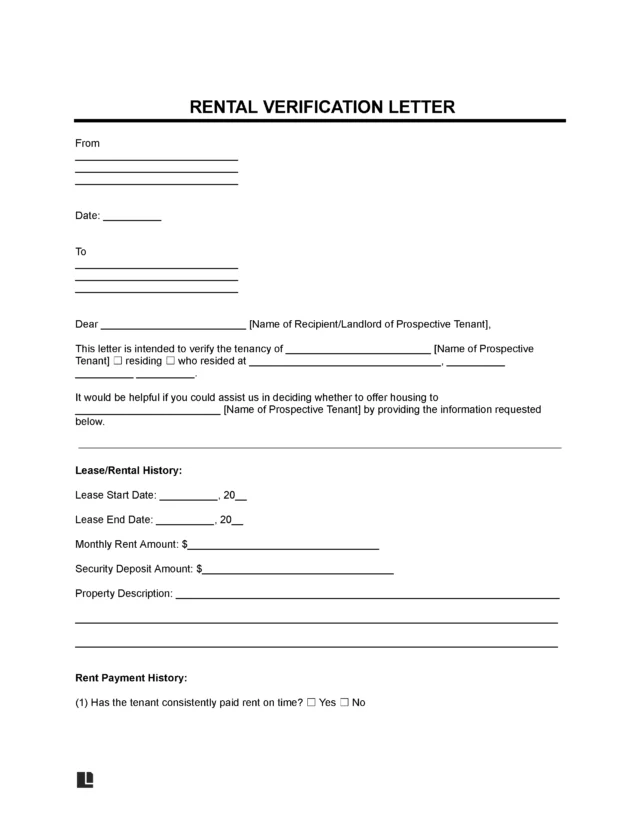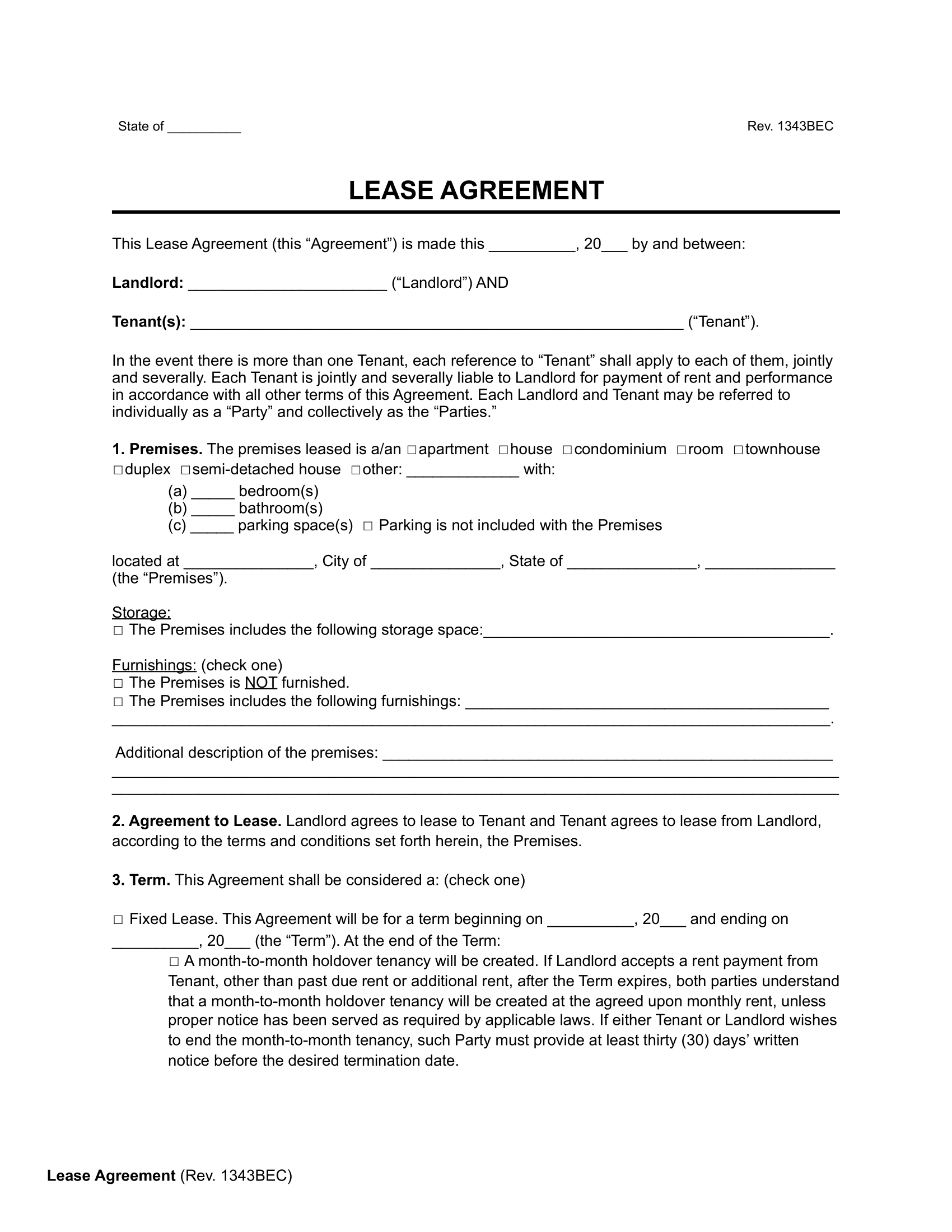Lease Agreements – By State
States have different guidelines for lease agreements. You must know the differences in grace periods, late fees allowed, security deposit limits, disclosure requirements, and more. Explore our state-specific lease agreement templates and guides to learn how to write a legally enforceable lease in your area.
- Alabama
- Alaska
- Arizona
- Arkansas
- California
- Colorado
- Connecticut
- Delaware
- District of Columbia
- Florida
- Georgia
- Hawaii
- Idaho
- Illinois
- Indiana
- Iowa
- Kansas
- Kentucky
- Louisiana
- Maine
- Maryland
- Massachusetts
- Michigan
- Minnesota
- Mississippi
- Missouri
- Montana
- Nebraska
- Nevada
- New Hampshire
- New Jersey
- New Mexico
- New York
- North Carolina
- North Dakota
- Ohio
- Oklahoma
- Oregon
- Pennsylvania
- Rhode Island
- South Carolina
- South Dakota
- Tennessee
- Texas
- Utah
- Vermont
- Virginia
- Washington
- West Virginia
- Wisconsin
- Wyoming
Lease Agreements – By Type
Not every lease serves the same purpose. Some focus on different property types, while others let you highlight specific contingencies. Review the different types of leases to find one that fits your situation.
Need a lease agreement in Spanish? Use our contrato de arrendamiento.
Residential Lease Agreement Forms
View basic rental contracts for renting residential property.
Use this template to rent out your property for a short period (usually between 1–31 days), most commonly as a vacation rental
Short Term (Vacation) Rental
Use this template to rent a condo unit, outlining terms, rent, and rules from the condo association to clarify landlord and tenant responsibilities
Condominium Lease Agreement
Lease Agreement Forms for Living With Someone
Explore leases for outlining your living arrangement with another party.
Specialized & Commercial Lease Agreement Forms
Use a specialized or commercial lease agreement to set clear terms for unique rental situations or business-related properties.
Use this template if you’re renting out an office building, retail space, restaurant, industrial facility, or any property where the tenant will operate a business
Commercial Lease Agreement
Lease Transfer Forms
Use these forms when a tenant wants to transfer their lease rights to someone else, whether by assigning the lease or subleasing the property.
Use this template to rent out a property (or just a room) when you’re already renting the property from another landlord
Sublease Agreement
Use this template to transfer lease rights and responsibilities, detailing lease type, property location, and all parties involved, for legal clarity and efficiency
Lease Assignment
Personal Guarantee Documents
These documents help landlords manage co-signers, either by adding a personal guarantee to a lease or releasing someone from their obligation.
Use this template to allow the guarantor to free themselves from their obligations under the contract
Release of Personal Guarantee
Notices, Addenda, & Amendments
Use these documents to modify, extend, renew, or formally communicate changes and updates to an existing lease agreement.
Notify tenants their lease won't be extended, ensuring clear communication and a smooth transition in property management
Non-Renewal of Lease
What Is a Lease Agreement?
A lease agreement is a legally binding contract that outlines the terms for renting a property. It states the obligations and rights of the tenant and landlord, including rent payments and repair duties.
This document clarifies expectations, helping you avoid disputes with your tenants. If issues arise, you can refer to the lease to address them.
A lease lets you rent out various properties, including homes, apartments, condos, and townhouses. Because a lease can be customized to fit specific circumstances, you may see it referred to as:
- Rental agreement
- Rental lease agreement
- Rental contract
- Residential lease agreement
- Residential rental agreement
- Tenancy agreement
The Leasing Process
Learn about the leasing process by reading our guide on how to rent out residential property.
Legal Considerations for Lease Agreements
When making a lease, it’s essential to get it in writing. While verbal leases may be recognized, they are not recommended. Verbal leases can be difficult to enforce, as the terms may be challenging to prove.
When creating a written lease, you must adhere to the landlord-tenant laws in your state. The laws vary from state to state in many different areas of leases, such as security deposits, notice periods for access, and maintenance duties. Our templates make it easy for you to create a lease agreement that adheres to your state’s requirements.
How to Write a Lease/Rental Agreement
Writing a lease agreement helps create an understanding between you and your tenant. You can outline key details and ensure that each party fulfills its responsibilities. Learn the steps involved in writing a generic lease agreement below.
Step 1 – Name the Parties
A simple rental agreement form must name the parties signing the lease and where they live. First, you should write down the following:
- The landlord or property management company and their current address
- The tenant or tenants and their current address
Some landlords require tenants to add a guarantor or co-signer. This person agrees to pay the rent if the tenant cannot.
Step 2 – Describe the Premises
The “premises” is the exact address and type of rented property, such as an apartment, house, or condominium. Describe the property in detail to clearly identify it. Give information about these elements:
- Parking
- Storage
- Furnishings
- Pending repairs (if applicable)
Step 3 – Define the Lease Term
The “term” is the length of time a tenant will rent the residential property. A standard agreement should detail when the lease term begins and ends. Furthermore, a lease can either be fixed-term or month-to-month:
- A fixed-term lease means the agreement is set for a predetermined or fixed period. It expires on the end date listed in the agreement (usually up to six months, one year, or two years from the start date).
- A month-to-month lease means the agreement lasts one month with no defined end date. It continues monthly until either the landlord or the tenant terminates the agreement.
Renting vs. Leasing
As you record the lease term, you can review our guide on leasing vs. renting to understand the differences between long-term and short-term arrangements.
Step 4 – Set Rent Payment Details
An agreement must explicitly list the monthly rental amount and outline the consequences of late rent. The landlord decides how much to charge for rent, but the cost is usually comparable to other properties in the same area.
In addition, standard rent control laws may limit the amount you can charge for rent. Check your local rent control ordinance to ensure your lease complies with those regulations.
Use your lease to highlight other payment-related details, such as the following:
- Initial payments (first month’s rent, last month’s rent, cleaning fees, etc.)
- Accepted payment methods
- Whether utilities are included in rent payments
- Delivery of the property
Rent Receipts
Explain whether you will provide rent receipts to the tenant after each payment. Setting this expectation upfront can prevent confusion.
Step 5 – Assign a Security Deposit Amount
A security deposit is a set amount of money a landlord collects at the beginning of the lease. It covers potential damages, unpaid rent, or other lease violations that may occur during the tenancy.
States regulate security deposits differently, so it’s important to know the laws in your area. You may need to set a limit on the amount you can charge, hold the funds in an interest-bearing account, or issue refunds following specific procedures. Learn more about your state’s security deposit laws.
Security Deposit Receipts
Include a clause about whether you will issue security deposit receipts to your tenants.
Step 6 – Set Property Rules
A basic lease agreement should cover property rules. These include rules on:
- Smoking
- Pets
- Subleasing
- Guests and visitors
- Renter’s insurance
- Rental inspections
You can also include other provisions as necessary. For example, you can require the tenant to report mold growth in the rental property promptly and perform basic preventative tasks to avoid it in the first place.
Step 7 – Mention Right of Entry
As a landlord, you may need to enter the property for non-emergency reasons. For example, you may need to board up the windows before a hurricane, show the property to other tenants, conduct a mid-lease inspection, or perform a repair. However, you can’t just enter without notice.
To respect the tenant’s right to quiet enjoyment, you must follow notice periods for entering the property. Ensure the notice period you list in your lease abides by state laws.
Notice Forms
Use a landlord notice to enter or a landlord repair notice to inform a tenant that you will be entering the unit.
Step 8 – Establish Guidelines for Early Termination
Life happens, and a tenant may need to break a lease early. Use your lease to list under what conditions they can send an early lease termination letter without penalty. For example, you can allow early termination if the tenant provides a certain amount of notice or if they meet specific conditions (such as military relocation). Consider including a liquidated damages clause, which lets you collect a predetermined amount if the lease is broken early.
You should also prepare for situations where you (the landlord) need to terminate the lease early. Include how much notice you must provide the tenant and under what circumstances, such as nonpayment of rent or other lease violations. Ensure to specify the required notice periods for different types of defaults.
Step 9 – Finalize the Lease
Once you finish discussing the details with your tenant, remember to:
- Print: Print at least two copies of the rental lease for you and your tenant(s).
- Sign: Sign and date the lease (both you and the tenant(s)).
- Save: Safely file a hard copy of the signed document and consider scanning an electronic copy for extra safekeeping.
Does a Lease Agreement Need to be Notarized?
Most leases, even ones for longer periods, do not need to be notarized. However, notarizing can add validity to the document, especially if the signers are not physically present. You may consider having a notary public fill out a notary acknowledgment form when you sign the lease to prevent disputes over the parties’ identities.
Sample Lease Agreement
Wondering what a lease agreement looks like? View our simple lease agreement template to learn its format. Then, create your own using our guided form. Download the final version as a PDF or Word file.
Note: The following lease agreement works for all states except California, Florida, and Washington, DC.



